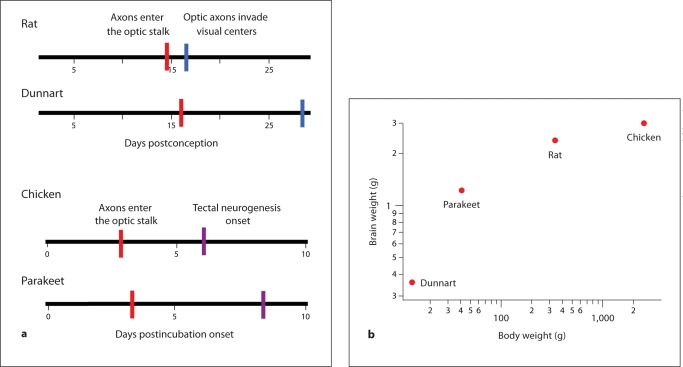Fig. 1.
The absolute duration of brain development does not always predict the overall brain size. a Among mammals, the developmental schedule of the dunnart (Sminthopsis crassicaudata) is longer than that of the rat (Rattus norvegicus). As developmental schedules lengthen, later events (e.g. optic axons invading visual centers) occur disproportionately later than earlier events (e.g. optic axons entering the optic stalk). For instance, optic axons reach the optic stalk on postconception day 16 in dunnarts whereas this event occurs at postconception day 14.5 in rats. Furthermore, optic axons invade visual centers at postconception day 28.5 in dunnarts but do so already at postconception day 16.5 in rats. b However, the brains of rats are larger than those of dunnarts. Given that the developmental schedules are longer in dunnarts than in rats but rat brains are smaller, we hypothesize that growth rates vary between marsupial and placental mammals. a Among birds, the schedule of brain development is longer in parakeets than in chickens. For instance, optic axons reach the optic stalk at approximately 4 days after incubation onset in parakeets, but this event occurs 3 days after incubation onset in chickens. b Although the duration of brain development is relatively short in chickens, the brain is larger in chickens than in parakeets, dunnarts, or rats. Thus, growth rates can vary independently of neurogenetic schedules within and between amniote classes.

